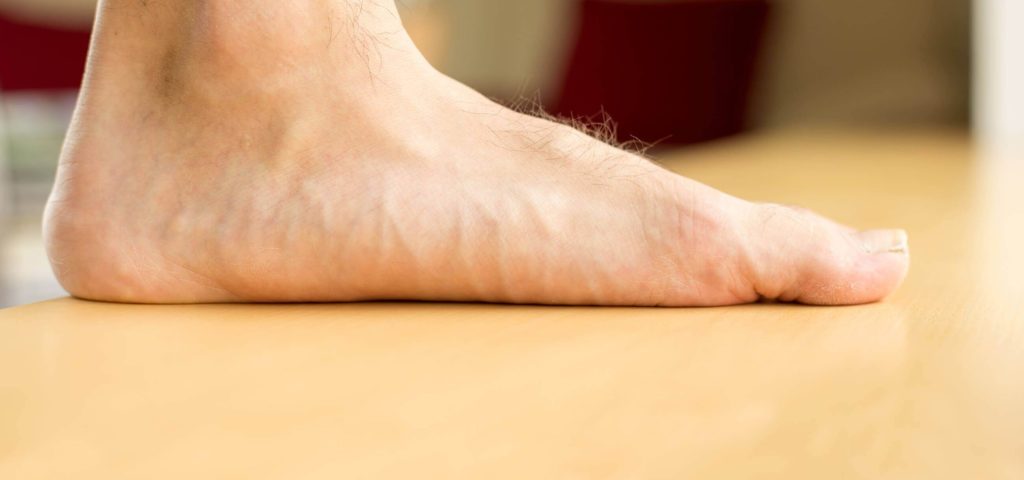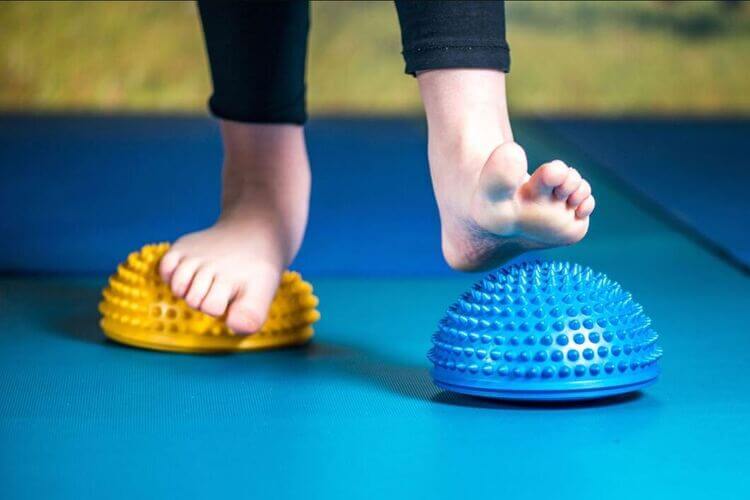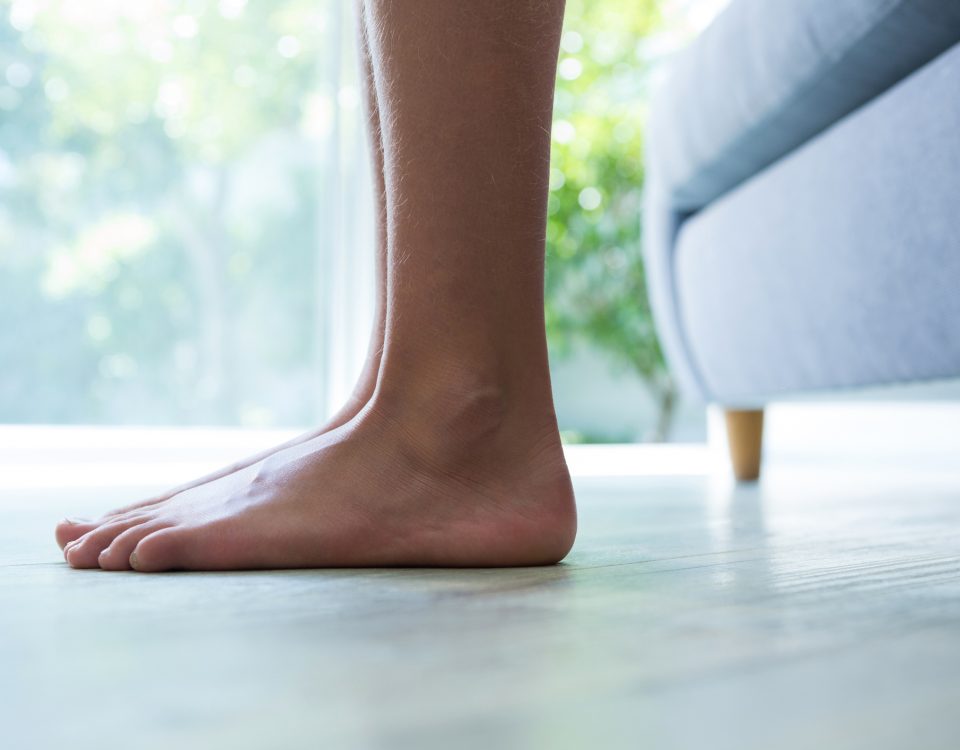- Have any questions?
- +91-9811443717
- [email protected]
Flat Feet: Causes, Symptoms, Treatment and Myths

12 Everyday Tips For Foot Care In Diabetes
March 11, 2020Flat Feet: Causes, Symptoms, Treatment and Myths

Most adults have a gap under the inner aspect of the feet which is called arch. Absence if this arch leads to development of flat foot, also known as pes-planus. It causes the entire sole of the foot, including the inner aspect to touch the ground when standing. It is estimated that approximately 20-30% of people globally have flat foot or low arches. Despite it being so common, it is one of the most poorly understood and neglectedpathologies in foot and ankle region especially in the Indian Perspective.
How did I/my child get Flat feet?
While flat foot is a normal entity in infants and toddlers, arches do develop in the first decade of life as the child becomes older. Flat feet tend to be genetic and run in the families. Most of the children have flexible pes-planus in which the arches appear when the child stands on his toes or during sitting but collapses on standing upright.
Other causes of flat foot include:
- Accessory navicular bone (Os Naviculare): An abnormal bone in the inner side of the foot is frequently associated with a flat foot deformity in young adults
- Tarsal coalition is a rare condition characterized by an abnormal connection between two bones in the foot.
- Posterior tibial tendon dysfunction (PTTD): Years of wear & tear weaken the posterior tibial tendon. It is considered as the main cause of Flat foot in adults.
- Inflammatory arthritis: Diseases like Rheumatoid Arthritis may damage the tendons and ligament of foot thus leading to flat foot
How can I tell if I have them/ symptoms?
The flat foot can easily be seen in an individual on inspection. It leads to loss of arch or gap in the inner aspect of the feet. It also causes the heel of the foot to shift outwards (valgus) when viewed from the back. In some cases, the front of the foot may deviate outwards as well (termed forefoot abduction).
Flat foot in many a case is asymptomatic and can be detected on routine physical examination/ school camps. But in some patients, it may be associated with symptoms that can occasionally be debilitating. It has also been proven that flat foot will not just affect the foot but the alignment of the whole lower limb including the back as well. Symptoms and consequences of the flat foot include:
- Pain and fatigue in the foot- inner aspect or outer aspect in prolonged cases.
- Reduced enthusiasm to run/ participate in sports for a child
- Clumsy gait
- Swelling in inside of the ankle
- Deformity in your heel
- Difficulty in rising up on your toes
- Excessive wear of the inner side of shoe
- Early development of arthritis of foot
- Bunions
- Hammer toes
- Shin splints and stress fractures
- Growing pain
- Plantar fasciitis (heel pain)
- Knee pain
- Hip pain
- Back pain
Most of the symptoms get worse with activity including walking and running thus forcing the person to walk less. As a consequence, it can lead to secondary complications including obesity and worsening of existing/ development of new metabolic problems.
How is flat foot evaluated/ checked?
If you believe you might have flat foot, it is prudent to get it checked from an orthopedic surgeon. Clinical evaluation involves confirming the diagnosis, looking at the extent of deformity, see if it is flexible or rigid deformity and also look for secondary effects of flat foot. It is normally followed by doing x-rays of feet and ankle in different angles in both standing and sitting position. In some cases, further investigations like CT scan and MRI might be needed to gain more information.
Does Flat foot always need surgery?
NO, Flatfoot in most cases can be managed nonoperatively. Observation in children less than 10 years is entirely reasonable to look for development of arch as the age progresses. For those who have minimal/ no symptoms, a trial of insoles customized to the patient’s foot is the first line of treatment. The insoles generally involve medial (inner) arch support with a medial heel wedge to correct the abnormal loading secondary to arch abnormality. Physiotherapy can also be tried to alleviate the symptoms. In cases where relief is not obtained despite above mentioned non-operative measures, surgery may be done to realign the feet.
Exercises for flat feet-
Physiotherapy can also be helpful in some cases with flat feet. It has been noted that tight calf (gastrocnemius) muscles are associated with worsening of symptoms due to flat feet. In such cases, stretching of tight calf muscles can be helpful in relieving the symptoms. Some exercises like short foot exercises have been shown to strengthen the intrinsic muscles of the foot and hence help in correcting flat and overpronated foot but its evidence is limited.

Can flat feet be corrected in adults?
There is no evidence to suggest that overpronation of flat foot can be corrected spontaneously or without any intervention in adults. As mentioned previously, some exercises have shown to be of slight benefit in rebuilding fallen arches early flat foot but the evidence is limited. Similarly insoles can only correct the abnormal loading pattern of the flatfoot but by themselves can’t form the arch. Only surgical intervention has shown to improve the arch in adults as well as children.
Type of surgery depends upon the severity of deformity and the cause of flat foot. In few cases with overpronated feet, a minimally invasive procedure known as Extra-Osseous TaloTarsal Stabilization (EOTTS) can be performed. Performed as a day surgery, it can be done using a small incision and involves insertion of a titanium stent in the sinus tarsi, the space between ankle bone (talus) and the heel bone (calcaneum). It is a quick surgical procedure with minimal side effects and a rapid and significant recovery. It is one of the few procedures to rebuild arch without doing any surgery for bone. This procedure is now available in India. (???And Dr Anuj Chawla is the only surgeon in Gurgaon who is accredited to perform this procedure) It can be performed as a stand-alone procedure or can be combined with other procedures for flat foot reconstruction. Other surgical options like cutting and shifting the bone (osteotomies) to realign the foot and tendon transfers are relatively major procedures and need a longer recovery period. In patients where the deformity is present for a very long period and has been complicated by arthritis, a major surgery like fusion is contemplated.
Pediatricians- How early can they identify it?
Flat foot can be identified as soon as the child starts walking. But as the child grows, the fat under the inner heel reduces and arch starts becoming visible. If the flat foot persists even after the age of 10 years, it is unlikely to improve and can be a cause of the symptoms. So, if the child is not very active in school and does not prefer running/ participating in outdoor activities in the school, it could be attributed to flat foot and needs to be addressed.
Myths about flat feet:
In view of lack of awareness and proper understanding, lot of myths exists about flat feet. First is that flat feet will get better with time. Though it can happen in the first decade of life, flat foot will stay with life if an adolescent has it. Secondly, flat feet won’t cause any symptoms. As it is a structural abnormality, the inner structures of the feet will get perennially stretched and the foot will always be loaded abnormally. Though it is hard to predict which flat feet will develop symptoms and which won’t but they are more prone to develop pain and fatigue in later years of their life. Third, there is no treatment and you have to live with it.With the advent of newer treatment strategies and development of implants like Hyprocure (EOTTS), the flat foot surgery has really simplified if detected and addressed at an early stage.
What to expect from your doctor:
The doctor will do your detailed assessment in the form of history and careful physical examination. It would be followed by investigations in the form of X-rays and may be CT scan or MRI in specific cases before deciding the best treatment strategy for you. Both nonoperative and operative are reasonable options for treatment and have to be individualized based on patients need and expectations.
Flat foot is a very common disorder that affects millions of feet worldwide. It needs to be assessed and can be easily addressed with various treatment modalities.


2 Comments
Very well explained. I think most of us are not aware about it. Thanks for updating our knowledge.
Very informative article Doctor. I feel many patients n parents would be relieved to know Flat foot is treatable